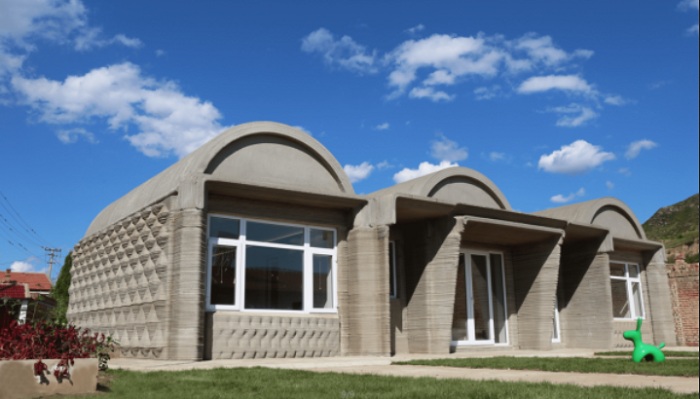This technology has many advantages: lower labor costs, efficient production, low manufacturing costs and high quality analysis. In addition, it helps to create affordable housing opportunities as the construction cost for a house with a simple interior is under $ 300 per sqm when built with local materials and labor.
In 3D printing equipment, the robotic arm and the printing tool are mounted on the lifting platform, while a machine containing the loader, mixer and printing material is mounted on the towing platform. The platform only needs two workers to operate it and complete the printing process of the whole house.
Recently, 3D printing technology was used to build a 106 sqm farmhouse in Wujiazhuang Village, Zhangjiakou.
The farmhouse includes three large rooms (one living room and two bedrooms) with arched roofs and two small rooms (kitchen and bathroom) with flat roofs.
Three sets of 3DP mobile robotic equipment, placed along the axis of each of the large rooms, printed the farmhouse. The foundation and the wall were printed directly on site and the arched roofs were printed in parallel outside the building. When the printing process was complete, a crane lifted the arched roofs into the previously printed wall.
3D digital models from the beginning of the process had captured the physical structure, interior design, plumbing and electrical systems, accurately determining the printing schedule and completion of the project.















